neuesten Nachrichten
Produktkategorien
Heiße Produkte
-
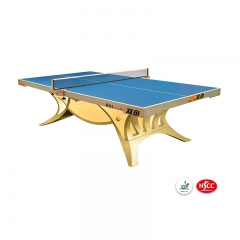
Premium Tischtennis Tisch für Meisterschaften Volant King
Diese Premium Tischtennisplatte für Meisterschaften geeignet. Genehmigt von ITTF und NSCC. Silber Unterwagen + Blaues Licht
Weiterlesen -
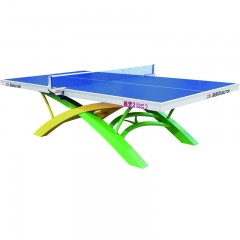
Offizieller Tischtennis Tisch für Turnier Volant Dream 2
Offizielle Tischtennisplatte Volant Dream 2 für internationale Wettbewerbe von Double Fish Sports entworfen.
Weiterlesen -
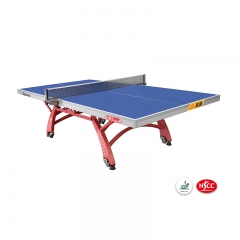
Offizielle Tischtennistisch für Wettkämpfe XIANGYU 328
Premium Double Foldable Portable Tischtennisplatte, Kompaktes Design Das neue Faltsystem minimiert das Verletzungsrisiko bei der Tischlagerung und beim Umzug. ITTF genehmigte Tischtennisplatte.
Weiterlesen -
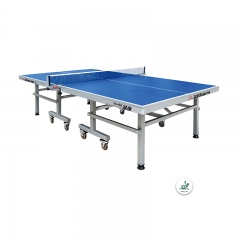
Offizieller langlebiger Tischtennistisch für World Tour 99-45B
ITTF genehmigte offiziellen dauerhaften Tischtennistisch für internationales Turnier. Dicke der Tischplatte: 25 mm TOURNAMENT QUALITÄT - Dieser professionelle Tisch ist für den höchsten Wettbewerb konzipiert. PERFEKT FÜR FAMILIEN - Bietet Premium-Spiel für jedes Alter. Kopf-an-Kopf gehen oder zusammenfalten für individuelle Übung. 2 Zoll schwere Stahlstützen halten den härtesten Herausforderungen stand. Ein großartiges Herzstück für Ihr Spielzimmer, Ihren Arbeitsplatz oder Ihr Fitnessstudio. EINFACHE MONTAGE - Starten Sie in wenigen Minuten mit einfacher Montage. Das hochwertige Netz ist mit einfach zu befestigenden Verschlussklammern ausgestattet.
Weiterlesen -

Beste Qualität Doppel Fisch V40 + Volant 3 Sterne Tischtennis Ball
Double Fish V40 + Volant 3 Sterne Tischtennis Ball bestätigt ITTF letzte T3 Technische Standards.
Weiterlesen -

Doppelte Fische QIJI Allround Tischtennis Klinge
Double Fish QIJI Allround Tischtennis Klinge, die die meistverkaufte Tischtennis Tischtennis Klinge, & nbsp; Perfekt für die traditionellen Allround-Spieler ist
Weiterlesen
Den Ursprüngen auf der Spur | Entwicklung der Tischtennisfabrik in Guangzhou (Teil 2)
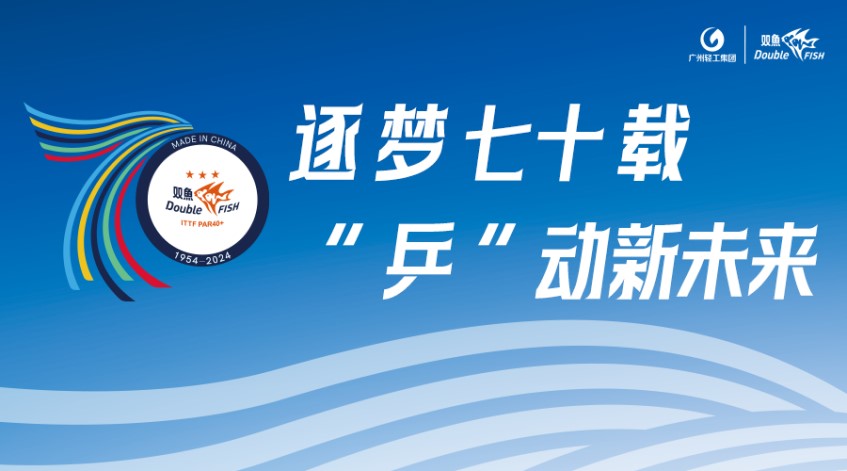
Seit Herbst 1960 hat die Chenggong Tischtennisfabrik mehr als zwei Jahre lang an technologischen Innovationen gearbeitet, wodurch die wichtigsten Produktionsprozesse der Fabrik bis Ende 1963 im Wesentlichen mechanisiert, die Produktproduktion und -qualität verbessert und mit dem Export von Produkten begonnen wurde. 1963 betrug die Produktion 3,2 Millionen, mehr als das Dreifache der 780.000 im Jahr 1960, von denen 58.400 exportiert wurden.
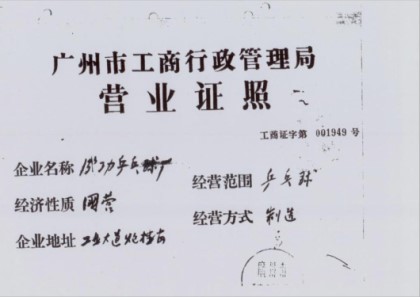
Geschäftslizenz der Chenggong Tischtennisfabrik
① Der Inhalt dieses Artikels basiert hauptsächlich auf den historischen Daten der Chenggong Table Tennis Factory und den Seiten 303-304 von Band 5 (Teil 1) der „Guangzhou City Chronicles“.
Doch gerade als die Produktion der Chenggong-Tischtennisfabrik boomte, wurde der Wassermangel im Polo-Tempel-Gebiet zu einem neuen Problem, das die weitere Entwicklung einschränkte. Schließlich beschloss die übergeordnete Abteilung, die Chenggong-Tischtennisfabrik nach Paolougang neben der Henan Industrial Avenue ② zu verlegen , um das Problem des Wassermangels zu lösen und den Produktionsumfang weiter auszuweiten. Dieser Umzug markierte den Beginn eines neuen Kapitels in der Entwicklung der Chenggong-Fabrik.
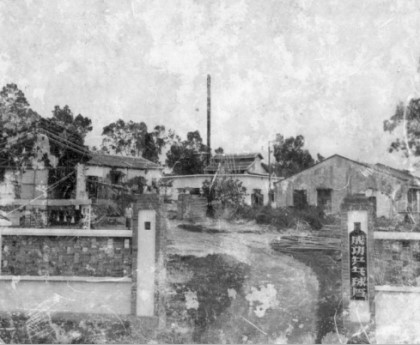
Chenggong Tischtennisfabrik nach Yanzigang, Bezirk Haizhu verlegt
②Paolougang neben der Henan Industrial Avenue ist heute das Gebiet Yanzigang im Bezirk Haizhu. Ab 1952 wurde der Vorort „Henan“ in Guangzhou als wichtiger Industriestandort in Guangzhou aufgebaut. Diese Straße war einst das Herz der Industrie von Guangzhou und brachte viele nationale Neuheiten hervor. In ihrer Blütezeit produzierte die 5,5 Kilometer lange Industrial Avenue Produkte, die im ganzen Land beliebt waren, wie Wanbao-Kühlschränke, Tiger Head-Batterien, Wuyang-Fahrräder usw. Das Grundstück, auf das die Chenggong Table Tennis Factory umzog, war ursprünglich eine Keramikfabrik, die bereits über grundlegende Fabrikanlagen verfügte, was eine Ausweitung der Produktion erleichterte. Mit der starken Unterstützung der übergeordneten Einheit konnte die Chenggong Table Tennis Factory Land kaufen und mit dem Bau beginnen und so eine solide Grundlage für die zukünftige Entwicklung legen.
1965 erzielte die Tischtennisfabrik Chenggong einen weiteren Erfolg, indem sie die erste fotoelektrische Ballwaage des Landes entwickelte. Anschließend stellte sie nacheinander automatische Schwerpunktmessgeräte, automatische Markendruckmaschinen, automatische Kantenbeschneidemaschinen und automatische Messgeräte usw. her und übernahm landesweit die Führung bei der halbautomatischen und automatischen Tischtennisproduktion in derselben Branche. 1966 überstieg die Produktion von Tischtennisbällen 10 Millionen. Während der „Kulturrevolution“ fusionierte sie mit einigen Fabriken und produzierte auch Thyristoren.
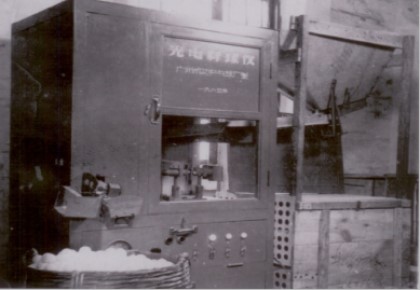
In 1965, Chenggong Table Tennis Factory pioneered my country's first photoelectric ball weighing instrument.

Automatic label printing machine developed by Chenggong Table Tennis Factory
In 1968, with the support and coordination of the local government, Chenggong Table Tennis Factory merged with Huada Badminton Factory③ and Zhendong Sports Goods Factory④ , significantly improving the productivity of the enterprise. Subsequently in 1969, the factory was renamed Guangzhou Sporting Goods Factory, marking the expansion of its product categories and business scope.
③According to the "Chronicles of Guangzhou City", the production of badminton in Guangzhou began in the early 1950s. With the rise of badminton, the production households continued to develop and gradually organized themselves. In 1956, the Yongjian Badminton Production Cooperative and the Yufeng Production Cooperative were formed. In 1960, the Yongjian Society was renamed the Huada Badminton Factory, with 100 employees. In 1964, the World Games brand badminton of the Yufeng Society was rated as a famous brand product in Guangzhou. During the "Cultural Revolution", all badminton production cooperatives were merged into the Chenggong Table Tennis Factory.
④Zhendong Sports Goods Factory mainly produced wooden-handled skipping ropes, table tennis nets, and volleyball nets. Before the merger, the two factories were located on the streets in the urban area, with scattered and narrow factory buildings (all old residential buildings), making material transportation and management extremely inconvenient. The merger improved the production conditions of such products. This article is compiled based on the oral narration of the retired leaders of Guangzhou Table Tennis Factory.
In 1972, the company was renamed Guangzhou Table Tennis Factory. In the same year, Guangzhou Table Tennis Factory introduced the innovative wax expansion method, replacing the old steaming process for producing close-seam balls, which doubled the work efficiency. The introduction of this technology not only improved production efficiency, but also made Guangzhou Table Tennis Factory the first company in China to achieve full mechanization of close-seam ball production.
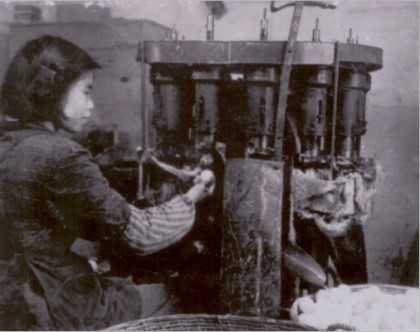
Table tennis ball expander from the mid-1970s
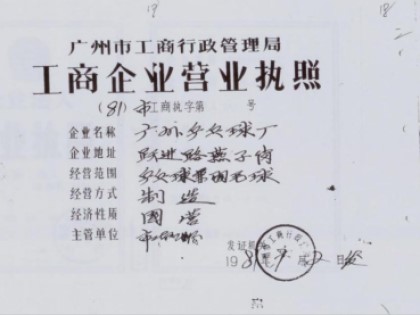
Guangzhou Table Tennis Factory Business License
In 1974, after five months of unremitting efforts and more than 130 precision tests, the Guangzhou Table Tennis Factory successfully developed China's first hard table tennis ball. This achievement marked a major breakthrough in China's table tennis manufacturing technology. The product was subsequently named "Shuangyu Brand". In 1979, this table tennis ball was officially approved by the International Table Tennis Federation and became the designated ball for international official competitions.
In 1980, "Double Fish" brand table tennis balls were officially rated as a national famous trademark and won the National Gold Award in the same year.
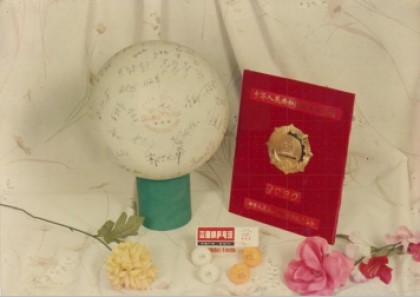
Doublefish table tennis won the national gold medal certificate
In 1981, with the booming domestic and foreign markets for badminton, the Guangzhou Table Tennis Factory restarted the production of badminton with the formal approval of the competent authorities. It focused on creating special balls for high- and mid-end competitions, strictly selected high-quality white goose feathers, and used imported cork and artificial leather as ball head materials to produce badminton with excellent whiteness, strong flight stability, and precise landing points. All products were sold to the Japanese market.
From 1986 to 1990, the annual output of badminton achieved an average high growth rate of 31%. In 1989, advanced Japanese production equipment was introduced, which greatly improved the production capacity and reached an annual production capacity of 24 million. In 1987, the Jinque brand badminton in the domestic market was rated as a high-quality product by the Ministry of Light Industry, and in 1990 it won the official certification of the national competition ball, marking the full recognition of product quality and technical level.
In 1986, as sales continued to expand, Guangzhou Table Tennis Factory set up branch factories in Zengcheng and Huaxian (now Huadu District, Guangzhou), focusing on producing mass-market table tennis balls to meet domestic market demand, while the main factory was committed to producing mid- and high-end table tennis balls for export. In 1987, total production soared to 63.02 million, of which 54.82 million were sold to overseas markets, generating US$2.18 million in foreign exchange revenue.
In 1988, the outstanding performance of Guangzhou Table Tennis Factory won the honorary titles of Provincial Advanced Enterprise and National Second-Class Enterprise. In 1990, Guangzhou Table Tennis Factory invested 2.5 million yuan in factory construction and technical transformation to further improve production capacity. In November of the same year, a new celluloid sheet plant was established in Zengcheng with an investment of nearly 2.57 million yuan. Through this series of transformation and expansion, the annual production capacity of table tennis balls doubled from 60 million to 120 million, making Guangzhou Table Tennis Factory one of the important bases for table tennis ball production in the world.

Guangzhou Table Tennis Factory in the 1990s
In 1994, the company relocated and expanded again⑤, requisitioned 50 mu of production land in Dabu Management District, Mayong Town, Dongguan City, relocated and renovated it, expanded its production scale, and achieved rapid improvement in production quality, laying a solid foundation for the company's sustainable development.
⑤ Da der Hauptbestandteil von Zelluloid, dem Rohstoff für die Tischtennisproduktion, Nitrozellulose ist, ist dieses Material extrem entflammbar und hat in China viele schwere Brandunfälle verursacht, darunter die Brandunfälle in der Double Happiness Tischtennisfabrik in Shanghai und der Tianjin Tischtennisfabrik. Am 14. Oktober 1993 brach auch in der Guangzhou Tischtennisfabrik ein Feuer aus, bei dem 4.000 Quadratmeter Gebäude niederbrannten. Darüber hinaus wurden durch das schnelle Wachstum der Wohngebiete in der Nähe von Yanzigang in den 1990er Jahren die Sicherheitsrisiken in der Gegend immer größer. Vor diesem Hintergrund beschloss die Guangzhou Tischtennisfabrik, ihre Produktionslinie vollständig zu verlagern und nach Dongguan zu verlegen, um höhere Sicherheitsstandards und Produktionseffizienz zu gewährleisten.
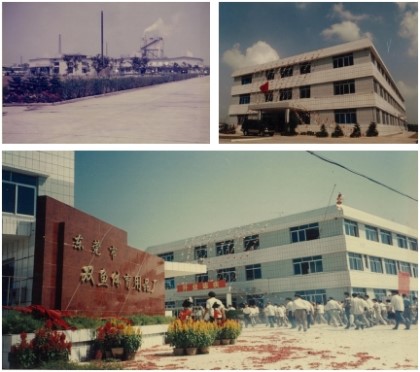
Dongguan-Fabrik in den 1990er Jahren
Aufgrund des großen Einflusses der Marke „Doublefish“ änderte die Guangzhou Table Tennis Factory im Jahr 1995 ihren Namen offiziell in Guangzhou Doublefish Sports Goods Factory.
Am 26. Februar 1998 wurde die Guangzhou Shuangyu Sporting Goods Factory mit der Guangzhou Shuangyu Sporting Goods Group Co., Ltd. fusioniert.























 Overseas business:(020)8431 9554
Overseas business:(020)8431 9554
 13829778212
13829778212